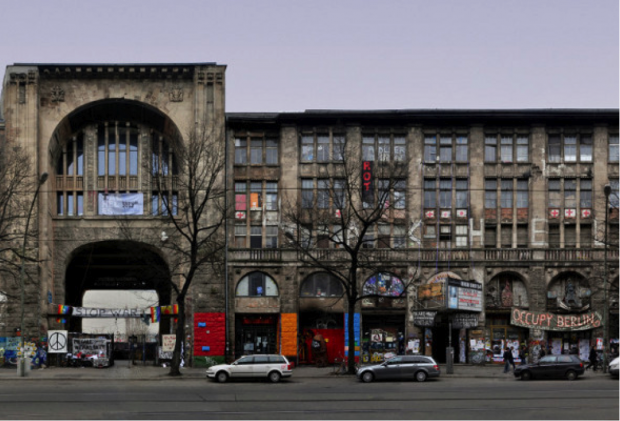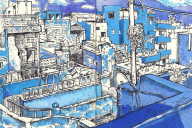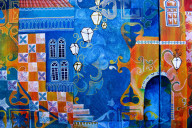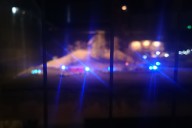With the equipment readily available today, anyone can take a photo of a place. If you want it to stand out you have to be a bit different, though. Cue today’s post about Jörg Dietrich’s panoramic photographs of cities. Today, he introduces us to Berlin as we talk about the why behind his photos, as well as his insider knowledge of this great city!
How do you choose what to focus on in each panorama?
Basically I am not altering reality, but presenting it in a different perspective. So the first focus is what might be interesting to see for me or others. I like it when the architecture along a street is very diverse, different styles, different heights, colours, shabby buildings next to new ones… But then again it is also great to show consistency where it cannot be shown with regular photography. An architectural style repeated along a street, a symmetry only visible when viewing the whole street block or a large insitutional building which gets even more impressive when visualized completely. So in the end, the focus can be different every time 😉
Only three buildings comprise this street block at the former inner Berlin border Checkpoint called “Charlie”, giving it a very unique look. As all of these are used for the Mauermuseum, the facades are additionally tagged with obvious symbols of history.
What do you hope each panorama says about the row of buildings it depicts?
When photographing in small towns I hope to create a new cityscape, showing that city in a way it has not been seen before. Which can actually work when you get the principal buildings together in one image. More generally and in larger cities I want to visualize the traditions of the local architecture and its uniqueness. Instead of just photographing one building I want to show how neighboring architecture influences each other. I want to show what time has done to the place, I want to tell how society is using the place and in many cases I also have people in the image, documenting the life as well.
The old building on the left side was a former classy department store building run down by history and then turned into an art house for the alternative art scene after the fall of the wall. The art house had to close in late 2012 at the order of investors.
Why panoramas?
I never questioned this. It was the only way to do what I wanted. The whole project started as an idea to visualize old town architecture so it can be seen next to each other like it normally could not. So the format depends on how much architecture I want to have included, the more, the wider the format. However when I incorporate skyscrapers it can end up being a normal 3:2 format 😀
That street was the main shopping area of West-Berlin. Even today the KaDeWe (Kaufhaus des Westens) at the left end of the panorama keeps the status of Berlins first class department store, comparable to Galeries Lafayette in Paris or Harrods in London.
This is a classic street view panorama showing a whole set of buildings along a common street in northern Berlin Mitte. It is spiced up however by the New Synagogue of Berlin and the former Postfuhramt at the left hand corner.
Where has been your favourite place to shoot?
In Berlin I was especially excited to shoot the buildings at Checkpoint Charlie. Three buildings with different architecture from different times and then the obvious use as a museum on the divided city. Elswhere I am always amazed I find interesting places in every city. However I really like the architectural mix in my home town Leipzig which inspired this whole project to start and, of course, in London!
Friedrichsstrasse is one of the major shopping streets in Berlin Mitte (former East-Berlin). These two blocks were developed in the 1990s in striking modern architecture, especially impressive in evening lumination.
If you could shoot anywhere in the world, where would it be and why?
Ha, lots of places! In more exotical terms I would like to shoot the famous desert-city architecture in Yemen or the impressive architecture of the old silk route cities in Uzbekistan.
One can’t do a photographic Berlin story without touching the Berlin Wall, right? Here is a part of the so called East Side Gallery, painted by international artists in 1990.
You can see more of Jörg’s Berlin panoramas here, and yet more cities on the Panorama Streetline site.

















